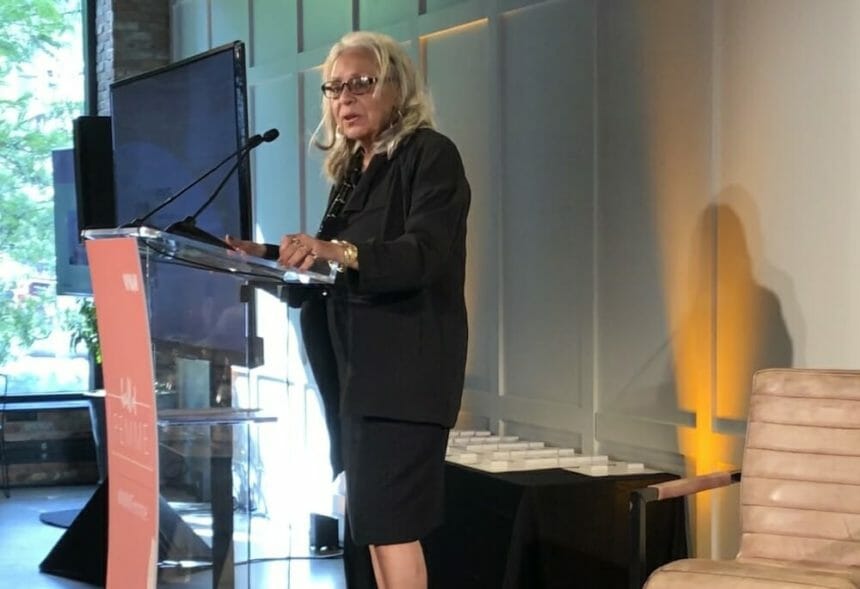Dr. Vivian Pinn has spent a career breaking ground in the healthcare field. For one, she founded and led the National Institutes of Health’s Office of Research on Women’s Health, where she probed the factors holding women back in science, healthcare and engineering fields.
Pinn spoke about what she learned from that research and her experiences throughout her career as a black woman in the sciences at MM&M’s Hall of Femme event on Thursday. She said that overcoming stereotypes has been a major point of progress for women in the sciences.
When she was in medical school in the 1960s, many believed that women could not succeed in STEM fields because they had smaller brains than men.
“One of my classmates came up to me and said, ‘Vivian, you have no business being here. I read ahead in my anatomy book, and I saw women have smaller brains than men, so you’ll never graduate medical school,’” she said. “But my classmate who was so busy telling me I had such a small brain that I wouldn’t make it flunked out in the second year. My first experience in gender medicine I learned back then in 1967, when I graduated and he didn’t.”
Pinn was named the first full-time director of the NIH’s Office of Research on Women’s Health in 1991. She was also the only black individual and only woman in her class to graduate from the University of Virginia School of Medicine in 1967 and the first black woman to chair an academic pathology department in the U.S. while at Howard University’s College of Medicine, according to the NIH’s website.
The lack of women in leadership in science and healthcare was for many years attributed to the pipeline, Pinn said. However, now that half of medical students and graduates are women, the “leaky pipeline” can’t be an excuse anymore.
Tools like networking, mentoring, executive support and work-life balance are ways to get more women into leadership roles in healthcare. Pinn also found in her research that it’s not only recruiting women to leadership roles that matters, implementing programs to support them is also necessary.
“We need to think about programs and actions to sustain that leadership,” she said. “Resources like networking or other ways to enhance their ability to maintain those leadership positions and be successful [are necessary]. It’s not just advancing women into leadership positions, but also thinking about how to sustain women in leadership positions.”
From the August 01, 2019 Issue of MM+M - Medical Marketing and Media







